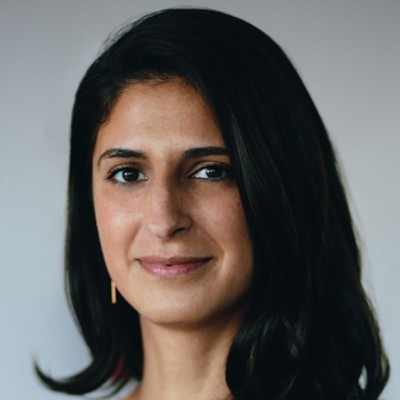- Video Library
- Nina Tandon, Epibone - Stem Cell Technology to Grow New Bone | LSI USA '24
Nina Tandon, Epibone - Stem Cell Technology to Grow New Bone | LSI USA '24

Nina Tandon
As CEO of EpiBone, I lead a team of talented scientists and engineers who are working to transform the field of regenerative medicine. Our mission is to provide patients with personalized, regenerative skeletal treatments that promote healing and improve quality of life.
At EpiBone, we use adult stem cells to grow personalized bone tissue for skeletal reconstruction. Our technology has the potential to revolutionize the field of orthopedic surgery and help millions of people worldwide.
Before joining EpiBone, I worked as a researcher in tissue engineering and stem cell biology, studying how cells interact with each other and their environments. I received my Ph.D. in biomedical engineering and MBA in healthcare entrepreneurship from Columbia University and have been recognized for my work by Forbes, Inc. Magazine, and the World Economic Forum.
In addition to my work at EpiBone, I am an advocate for diversity and inclusion in STEM fields and am a frequent guest lecturer in courses at Columbia University and MIT. I am also a frequent speaker and commentator on issues related to regenerative medicine, biotech entrepreneurship, and innovation in healthcare.
Nina Tandon
As CEO of EpiBone, I lead a team of talented scientists and engineers who are working to transform the field of regenerative medicine. Our mission is to provide patients with personalized, regenerative skeletal treatments that promote healing and improve quality of life.
At EpiBone, we use adult stem cells to grow personalized bone tissue for skeletal reconstruction. Our technology has the potential to revolutionize the field of orthopedic surgery and help millions of people worldwide.
Before joining EpiBone, I worked as a researcher in tissue engineering and stem cell biology, studying how cells interact with each other and their environments. I received my Ph.D. in biomedical engineering and MBA in healthcare entrepreneurship from Columbia University and have been recognized for my work by Forbes, Inc. Magazine, and the World Economic Forum.
In addition to my work at EpiBone, I am an advocate for diversity and inclusion in STEM fields and am a frequent guest lecturer in courses at Columbia University and MIT. I am also a frequent speaker and commentator on issues related to regenerative medicine, biotech entrepreneurship, and innovation in healthcare.

17011 Beach Blvd, Suite 500 Huntington Beach, CA 92647
714-847-3540© 2025 Life Science Intelligence, Inc., All Rights Reserved. | Privacy Policy







